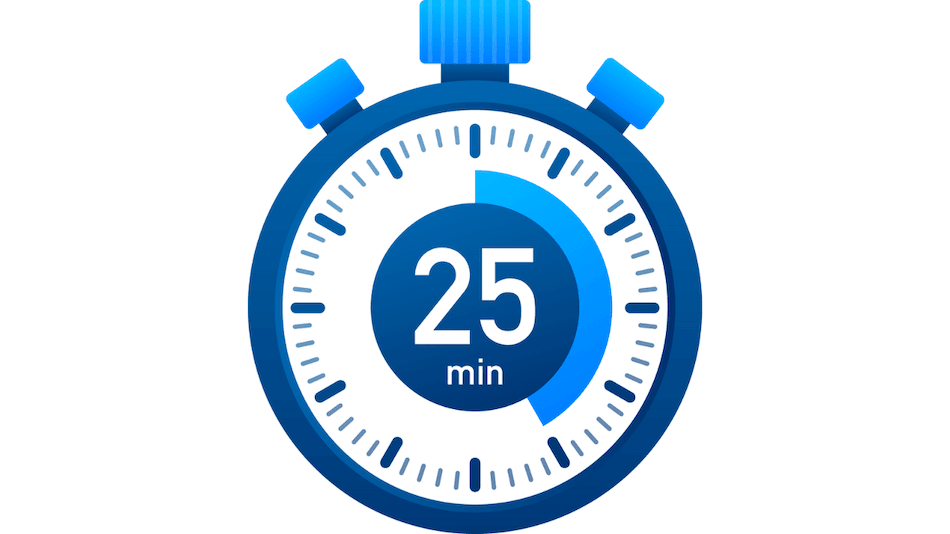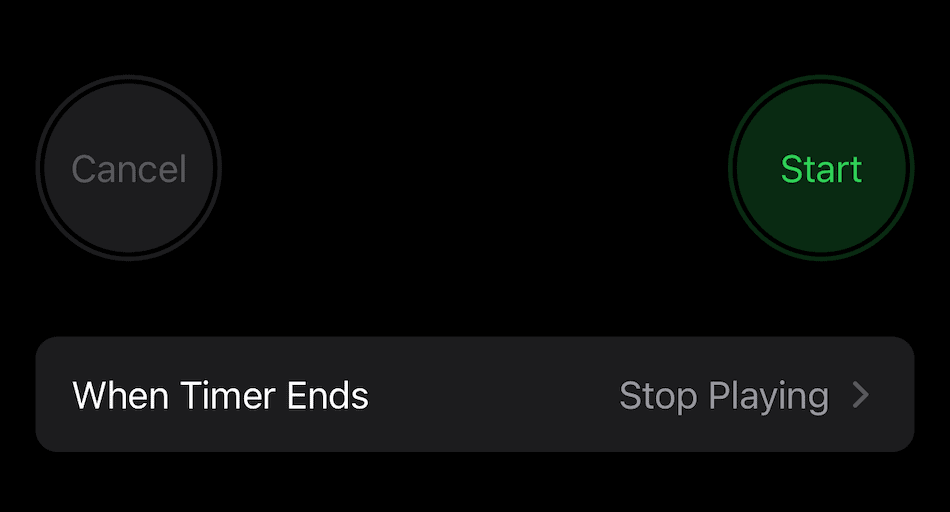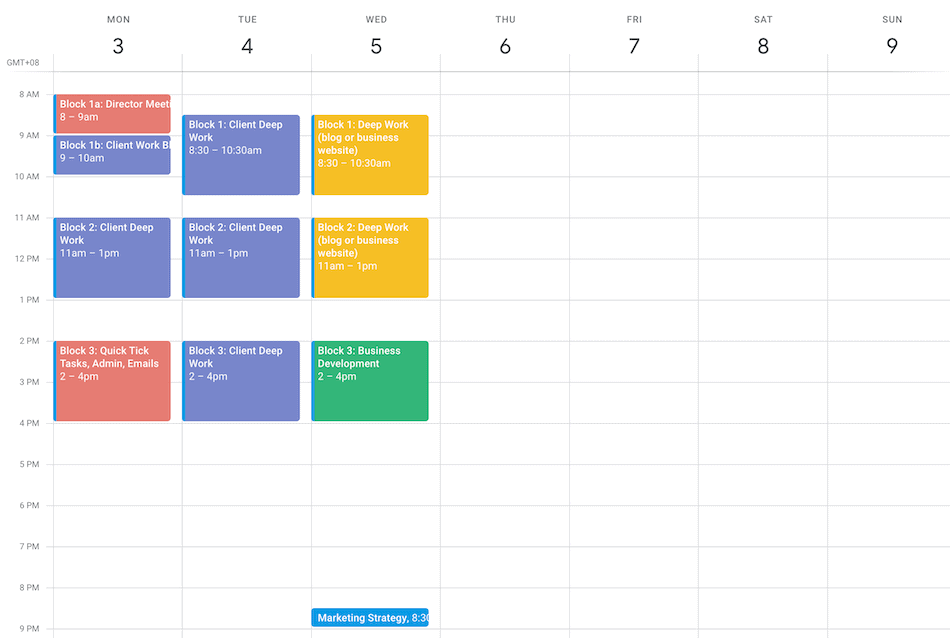Whenever you mention to someone that we’re digital nomads, they think it’s all lounging on the beach, occasionally glancing at our laptops a couple of days a week and spending the other days learning to surf and going scuba diving.
From first-hand experience, this is NOT the case. Yes, we spend a lot of time doing crazy, amazing things, but there’s more to it than that. We still have to run a business.
And FYI, using your laptop all day in the sun and sand is NOT a good idea… trust us!
When you’ve worked super hard to put yourself in a position to work from anywhere in the world, you need to keep it that way. So we’ve rounded up our best tips to manage your time as a digital nomad.
Note: If you’re not planning on travelling anytime soon, check out our article on freelancer time management techniques for how to manage your time at home.
What Makes Time Management So Important for a Digital Nomad?
If you’re anything like us then, you made a start on your business, things started going well, you quit your job, things got even better and then you realized… I can do this from anywhere in the world.
You packed your bags, said goodbye to the family, and off you went.
The problem with this – and the problem with any business for that matter – is that once things start going really well, it’s easy to take your foot off the gas and start coasting.
This is why 20% of businesses fail in their first year and roughly 60% go bust within their first three years.
The urge to start coasting when you’re on your travels is 10-fold:
- You want to make the most of the (usually) phenomenal weather
- You have an itinerary of activities as long as your arm
- You’re meeting new people every day that you want to spend time with
- You want to take up new hobbies like scuba diving, surfing, snorkeling, and mountain trekking
The list goes on!
All too quickly can your energy get used up on these activities, leaving you with no energy to focus on your work.
This is why it’s imperative to keep a close eye on your time management to avoid neglecting your business.
Something I ask myself when I start getting off track: Is my success and my vision more important to me than the current distractions that I’m letting get in the way?
Why Time Management Is Different for a Digital Nomad
So you might be wondering what makes it so different from managing your time at home.
These are the exact thoughts we had before we left and we quickly had to change our attitude.
Time management is different for digital nomads because you simply don’t have the time available you do at home if you want to actually get out, explore and do the things you set out to do on your journey.
You have to learn to manage your time more efficiently, you no longer have a full-time work week to complete all your work.
You could give yourself this amount of time every week but then what would be the point in setting out on your digital nomad journey?
You need to become the CEO of your time and energy.
So, here are the 10 best tips we’ve got on managing your time effectively. We did all the research and made the mistakes so that you don’t have to.
- Set Goals
- Structure Your Time
- Use To-do Lists
- Try the Pomodoro Technique
- Try Time Blocking
- Automate Everything You Can
- Delegate
- Give Yourself Enough Time in Each Destination
- Give Yourself a Vacation From Your Vacation
- Take Advantage of Travel Days
Remember: These tips are not a 1 size fits all. Test and find what works best for YOU.
1. Set Goals

I know, business 101, set goals and work toward them. The key is to set goals that are aligned with your digital nomad lifestyle.
For us, our goals and mindset changed significantly when we started our travels. It went from:
“How can we earn as much money as possible?”
To
“How can we work as little as possible?”
To plan your time effectively, you need to know exactly what it is that you’re striving for. You can check out our post on goal setting if you’re struggling to find your why.
2. Structure Your Time

We all have the same 24 hours in the day, so how it is that some people manage to get 10x more tasks done in a day than others can do in a week?
They structure their time.
It’s that simple and more important than ever when you’re on your travels trying to run a business.
We sit down every week (usually Sunday) and every workday to plan out what we’re going to spend our time on.
However, structuring your time is very circumstantial and unique depending on what you’re like as a person and the needs of your business.
For example, do you need to be contactable by employees, or be available for client calls, are they in a different time zone to you? These requirements will dictate how you can structure your time.
Which brings me to the next section.
The Importance of Knowing Yourself
Traveling is stressful. You’re in a different environment, potentially a different climate – getting to know yourself and when and how you work best is vital for a successful digital nomad lifestyle.
Ask yourself these questions to really start thinking about what is going to work best for you:
- When in the day do I have the most energy?
- When in the day do I have the least energy?
- Are you more productive in the morning or are you a night owl?
- What kind of temperatures can you work in?
- How productive can you be in a busy cafe or do you need a quieter environment?
Once you start answering these questions you can arrange your days around them. We try to schedule work for our high-energy times of day and meetings, admin, and emails for our low-energy level times.
For example, I (Emma) absolutely cannot do any form of productive work until I’ve had a morning coffee. I know that trying to wake up at 7 am and start working immediately is pointless and is setting me up for failure. Whereas, when it’s necessary Connor can roll out of bed and straight onto his laptop with no problem.
Remember: What works well for us and our business may well not work for you. Try out a few techniques until you find a structure that really works well for you whilst traveling.
Designate Set Workdays
This is easier said than done, especially if you have a day of travel every 1 to 2 weeks. That’s why we recommend giving yourself enough time at each destination (more on that later).
What works best for us is to have a set number of ‘workdays’ per week. We’ve found that 3 workdays a week is optimal for getting all our work done and having enough spare time for activities.
During these workdays, we act as though we are employees of the business. We get up early, find a suitable workplace (usually a designated coworking space or a cafe that has good coffee, breakfast, and internet) and get to work.
We like to get the bulk of our work done in the morning when we’re both most motivated and at high energy levels.
We take a break, get some lunch, maybe catch some sun by the pool, or even take a mid-day nap! Then it’s back to work for a few more hours. See our time-blocked calendar for when we’re traveling below.
Set Time Limits on Tasks
Something that helps us to be more efficient with our time is being strict with artificial deadlines.
Let’s take a look at a couple of examples and decide which is going to be best whilst traveling.
“I want to get this article finished today”
*Spends 10-20 minutes on the article here and there whilst the rest of the time my focus is elsewhere (probably social media). Starts the article at 10 am, finished at 6 pm.*
“I want this article finished by mid-day”
*Spends the next 2 hours in solid concentration with a 5-10 minute break. Starts the article at 10 am, 95% complete by mid-day. The rest of the afternoon is completely free with a 10-20 minute job to finish off in the morning.*
Which would you prefer when you’re in a different country with 1001 different things you want to fit in your limited time in each destination?
This is called Parkinson’s Law, if you allow yourself a whole day to carry out a task, it will take a full day, if you allow a couple of hours then it will take a few hours.
There is an art to leveraging artificial deadlines. Give it a go next time you have a task to complete, don’t just say you’ll work on it, tell yourself you want it done by X time and see if it works for you.
3. Use To-do Lists

We absolutely swear by to-do lists, we use them everywhere in life.
A to-do list can be a big master list of every task you need to complete or can be broken down into categories. This makes them a lot easier to manage than having ‘sort the accounts’ mixed in with ‘buy peppers, onions, and milk’.
Let’s discuss some different to-do list techniques and tips then we’ll break down how we use to-do lists to manage the business while we travel:
Kanban
When you’re traveling, your to-do list quickly fills up with tasks that come to mind and can’t be actioned immediately because you’re on a hike, sitting by the pool, or taking a walk on the beach.
The Kanban time management method can be used to break up the lengthy to-do list you’re met with every morning.
The Kanban method is the process of breaking your to-do list up into 3 categories ‘to-do’, ‘doing’, and ‘done’.
To do: Items on your list that you need to get to eventually
Doing: Items on your list that you need to do today
Done: Completed items
Daily Highlight
Using a daily highlight is great if you struggle to get tasks done. It also helps to really focus on what’s important and prioritize your productive hours whilst you’re traveling.
Every day, pick one thing to be the highlight of the day. Your objective of the day is to complete this one singular task. Anything extra is a bonus.
The reason this method works so well is that when your to-do list is 10, 20, or 30+ items long, it’s easy to chip away at 10 different things and not actually complete any tasks – I like to call this ‘task hoping’ and Connor is the worst for it!
We check in with each other every morning on what our daily highlight is to keep ourselves focused and accountable.
Ivy Lee Method
You’re probably going to start noticing a bit of a pattern here however, the Ivy Lee method is great for implementing a priority into your workflow. This method also aligns with the Rapid Planning Method which helps you stay organized and focused.
To implement the Ivy Lee Method, sit down every morning with your entire to-do list and prioritize it. Put your most important task at the top. Then pick the second most important and so on. You then work through your list from top to bottom.
Any items on the list that you don’t get to complete that day, you then move to the top of the list for tomorrow.
Start With The Most Difficult Tasks
Rather than prioritizing based on importance, a great way to get your hardest tasks out of the way is to work on them first.
The sense of accomplishment once you’ve completed the most challenging task makes everything else appear easier in comparison – often referred to as ‘eating that frog’.
Keep Your List Handy
How many times have you had a great idea or thought of something really important you need to do, not written it down, and forgotten about it?
Keep a copy of your list on your phone – we love using Apple notes as it syncs up with our MacBooks making it effortless to update on the go.
If you don’t have a MacBook then make your notes on your phone during the day and at the end of every day, check to see if there’s anything that needs transferring over to your main list – whether it’s a written list in your journal or a virtual list on a note-taking app.
4. Try the Pomodoro Technique

Sometimes it’s difficult to find that initial motivation to start working on a task especially when you’re surrounded by temptations to NOT do any work. For times like these, the Pomodoro technique is brilliant.
The Pomodoro Technique was invented by Mr Cirillo in an attempt to help him focus on a task. The aim is to resist distractions and focus for just 25 minutes, take a 5-minute break, and repeat.
When you’re struggling to get going on a task, the thought of just doing 25 minutes of work is usually way less committing than the actual task itself.
Set your timer and get to work.
Then when the 25 minutes is up, you’ll be into the swing of things and the next 25 minutes are way easier.
To help you, check out the app called Tomato Time or just use an alarm on your phone for 25-minutes and give it a go. Connor spent a week using the Pomodoro method to test it out, here’s how it went.
Note: I like to use the iPhone alarm and change the option to ‘Stop Playing’ which stops the music that you are listening to when done.

5. Try Time Blocking
Time blocking is the future. I mean, it has to be if Elon Musk does it, right?
All jokes aside, time blocking is the process of breaking up a period of time, usually a day or a week into smaller segments or ‘blocks’. Each block is then allocated a specific task to be carried out in that segmented time block.

How far you want to go with this is completely up to you, some people block out everything, when they’re going to eat, what they do on their days off, and time to exercise.
I used to time-block everything when I was in the UK working full time, but now our schedules need to be a bit more flexible than that, so I have three workdays time blocked every week and shift those three days around to fit our plans.
Tip: use a time tracking tool (we use Toggl) to see how long each task takes you. This will start giving you a good idea of how many tasks you can fit into a 2-hour window
6. Automate Everything You Can

When you’re traveling you need to be as efficient as possible to get the most out of the limited time you have. Sometimes you feel like you just don’t have enough hours in the day to do all the activities you want and run a business.
Automating systems and processes is essential to finding those hours you need to fit everything in.
A great example of this is using Calendly. When you’re in a different time zone it’s easy to fall into wasting a lot of time organizing meetings. “hey, are you free this time which is this time EST which is this time GMT” and so on.
These emails can go 5, 6, and 7 deep before a time has been agreed upon. By using Calendly, you simply send someone a link, it has all your availability and they can just book a slot directly in your calendar.
7. Delegate

Your time is VALUABLE. Especially as a digital nomad, if you’re spending time carrying out activities that could be outsourced for less than your dollar value for time, that’s time wasted that you could be: surfing, sunbathing, jungle trekking, water skiing, scuba diving… you get the idea.
How do you know when to start delegating tasks? Simply work out what the dollar value of your time is, if you’re ever carrying out a task that can be outsourced for less than this amount, you absolutely should.
Some examples of areas to delegate first:
- Bookkeeping
- Client outreach
- General admin work
We use Upwork to find freelancers to outsource this work to.
8. Give Yourself Enough Time at Each Destination
The last thing you want to be doing whilst running a business is trying to cram in 1001 activities into a 3-day stay somewhere that you’ve been dreaming of going for the past 10 years.
Slow down, take your time, and give yourself enough time in each location to settle in, see the sights and work on your business. This is KEY to ensuring you enjoy each place that you visit.
You’re a digital nomad. You can work from anywhere in the world with no deadline to come home. What’s the hurry!?
Now I’m a self-confessed over-planner, especially when it comes to traveling. So I use it to my advantage.
Before we head to a new country, I start a master spreadsheet with a giant day-by-day plan. Some might think this is overkill but what it means is that when we travel to a certain town, I can see how many days we need for trips and activities, workdays, and ‘nothing’ days to just rest.
I also recommend checking out cafes and co-working spaces in advance. If you’re heading to an island with rubbish wi-fi, no cafe culture, and definitely no workspaces, then there’s no point planning two workdays while you’re there. Instead, you need two extra days at your next stop to make up the time.
9. Give Yourself a Vacation From Your Vacation
I know this sounds silly but you wouldn’t believe how quickly you can get burnt out when you’re trying to run a business and travel.
That’s why every 4 to 6 weeks we plan at least a week-long stay somewhere that has really good amenities. This gives us a few days to completely relax and recharge our batteries. We then spend the remaining few days getting some intense work done.
Note: this works exceptionally well if you have clients on retainer and plan this for the beginning of a month to get a good chunk of work out of the way.
10. Take Advantage of Travel Days
Whether it’s a long flight or a short one, travel days are ALWAYS stressful. Whenever we have a travel day, we let all our clients know and make sure we don’t schedule any calls or deadlines for that day.
But, we do try to get some work out of the way. Flights are a great time for any admin work, planning or some general organizing – any offline work that can be completed is great on a flight.
Buses on the other hand throw up a bit of a challenge. I can’t look at my laptop, read a book, or even check my phone without getting travel sick, so productive bus travel days are completely out the window.
So, don’t beat yourself up if you don’t make all your travel days productive. Sitting back and listening to some music or a podcast to recharge during an already stressful day is more than enough sometimes.
Embrace the Learning Curve
Leaving your routine to become a digital nomad is a huge learning curve and managing your time is a big part of that.
After 8 months of trial and error, we’re finally feeling confident in the way we manage our time. We tried different techniques and working environments to figure out what worked for us, and you need to do the same.
Looking for a flexible and customizable productivity method? Discover the Flowtime Technique to boost your focus.
Remember:
- Start with your goals
- Structure your time
- Use to-do lists
- Try the Pomodoro technique
- Try time blocking
- Automate anything you can
- Delegate
- Don’t rush
- Take a vacation sometimes
- Take advantage of travel days




